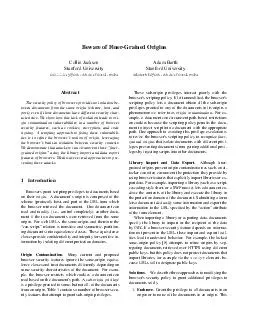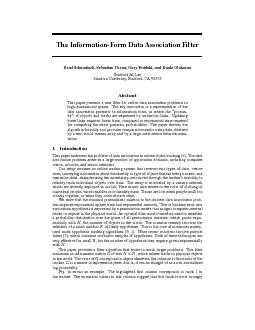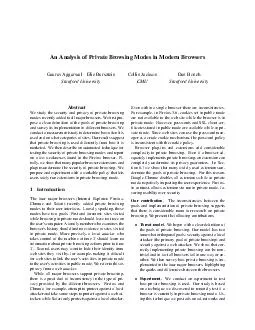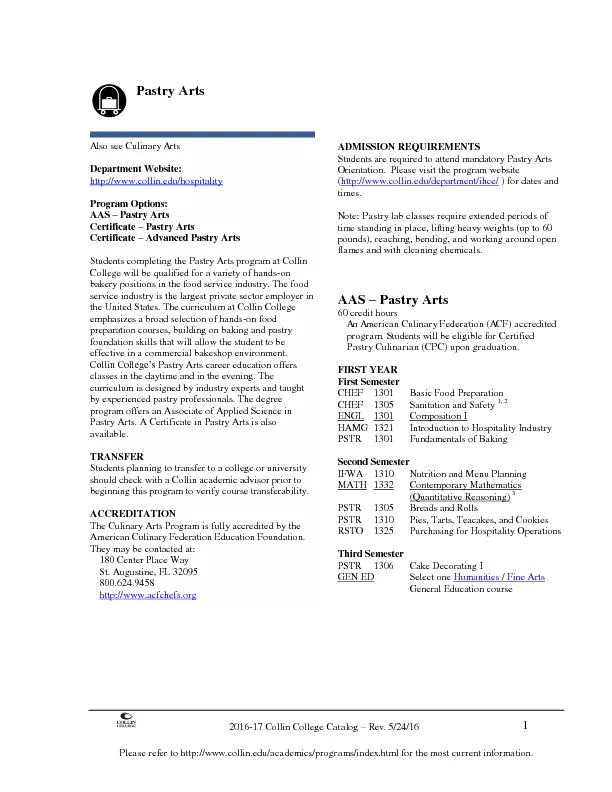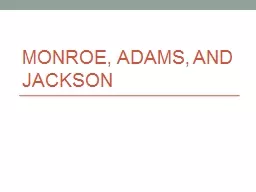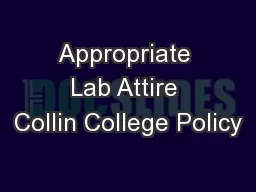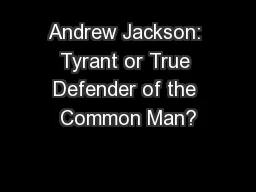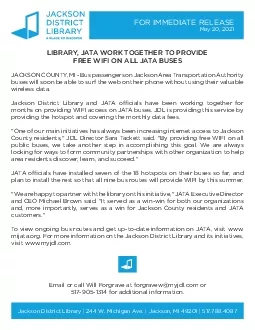PDF-Beware of FinerGrained Origins Collin Jackson Stanford University collinjcs
Author : giovanna-bartolotta | Published Date : 2015-02-23
stanfordedu Adam Barth Stanford University abarthcsstanfordedu Abstract The security policy of browsers provides no isolation be tween documents from the same origin
Presentation Embed Code
Download Presentation
Download Presentation The PPT/PDF document "Beware of FinerGrained Origins Collin Ja..." is the property of its rightful owner. Permission is granted to download and print the materials on this website for personal, non-commercial use only, and to display it on your personal computer provided you do not modify the materials and that you retain all copyright notices contained in the materials. By downloading content from our website, you accept the terms of this agreement.
Beware of FinerGrained Origins Collin Jackson Stanford University collinjcs: Transcript
Download Rules Of Document
"Beware of FinerGrained Origins Collin Jackson Stanford University collinjcs"The content belongs to its owner. You may download and print it for personal use, without modification, and keep all copyright notices. By downloading, you agree to these terms.
Related Documents

